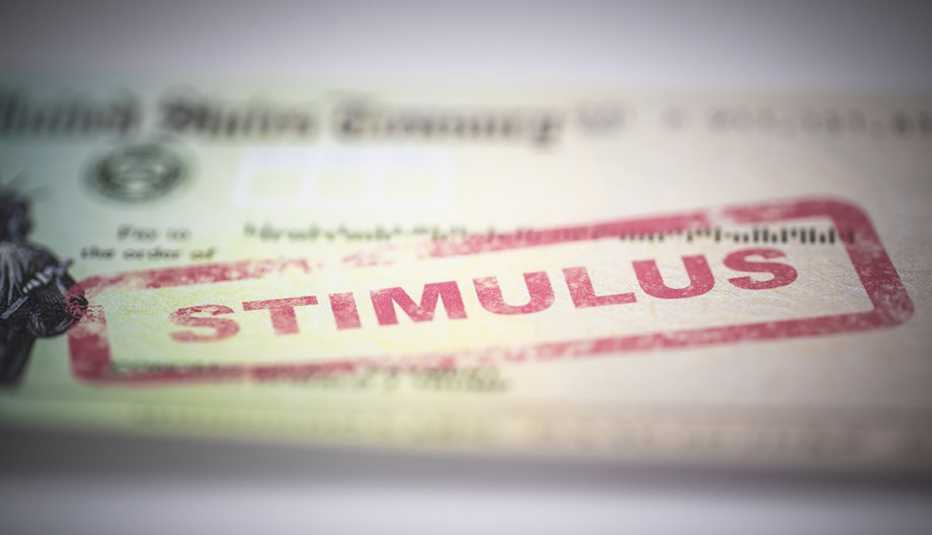Staying Fit


The Internal Revenue Service (IRS) has extended the deadline for the nearly nine million people who don’t normally file federal income taxes to register for an economic stimulus check. The deadline is now Nov. 21, five weeks later than the original Oct. 15 cutoff.
This additional time is only for those who have not received a stimulus check, don’t normally file a federal income tax return and don’t plan to do so. Typically, these are people who made little or no money and didn’t have to file.


AARP Membership— $12 for your first year when you sign up for Automatic Renewal
Get instant access to members-only products and hundreds of discounts, a free second membership, and a subscription to AARP the Magazine.
The IRS says these individuals should register as quickly as possible using the Non-Filers tool on IRS.gov. The tool will not be available after Nov. 21 because the IRS needs to gear up for the 2020 federal income tax filing season.
“We took this step to provide more time for those who have not yet received a payment to register to get their money, including those in low-income and underserved communities,” said IRS Commissioner Chuck Rettig. “The IRS is deeply involved in processing and programming that overlaps filing seasons. Any further extension beyond November would adversely impact our work on the 2020 and 2021 filing seasons. The non-filers portal has been available since the spring and has been used successfully by many millions of Americans.”
If you miss this deadline, you’ll have to file a 2020 federal income tax return to claim your credit. If you filed a 2019 or 2018 federal income tax return and didn’t receive a stimulus check – or if you registered with the IRS and didn’t get a check – you can use the IRS Get My Payment tool to check its status.
Who is eligible
U.S. citizens and U.S. resident aliens are eligible for checks of up to $1,200 ($2,400 if married and filing joint federal tax returns), provided they are not claimed as a dependent by another taxpayer and have a Social Security number. There are also income limits to receive the full payment:
- $150,000 for married couples filing joint returns
- $112,500 for head of household filers
- $75,000 for all other eligible individuals
The amount of the stimulus check is reduced by $5 for every $100 of income above those levels.
Dependent children
If you didn’t file taxes and received $1,200 because you receive government benefits, such as Social Security retirement benefits, Survivor or disability benefits, Supplemental Security Income (SSI), Railroad retirement benefits or Veterans Affairs (VA) benefits, the deadline to register for up to $500 per eligible child is Nov. 21.
If you haven’t received a stimulus payment and are not required to file 2018 or 2019 federal income tax returns, you may use the IRS Non-Filers Tool to register yourself, your spouse and any eligible children for the additional payment of up to $500. You have until November 21 to do so.
Self-supporting college students
Generally, a self-supporting student who registers will receive a $1,200 payment if they are single or $2,400 if married and file a joint return and the student or their spouse cannot be claimed as a dependent. If they have dependent children, they may also get an additional $500 for each qualifying child.
Only self-supporting students who are not required to file a tax return should use the Non-Filers tool. Students who are claimed as a dependent on their parents’ returns (or anyone else’s) cannot get a payment. Students who need to or want to file a regular tax return should not use the Non-Filers tool. This includes any student who had federal income tax withheld from their pay and wants to file a tax return to claim a refund. Working students who have a summer or part-time job should consider filing a tax return so they can receive a potential federal tax refund.
Millions may be missing out on stimulus checks
The IRS sent letters to those who may be eligible for a stimulus payment, reminding them of the claiming deadline. The letter looks like this:
Anyone using the non-filers tool can speed up the arrival of their payment by choosing to receive it by direct deposit. Those not choosing this option will get a paper check.
Who may be missing a stimulus check?
State-by-state breakdown of the number of people who still potentially qualify for a stimulus payment:
California
1,186,896
Texas
796,525
Florida
567,425
New York
537,726
Georgia
348,631
Illinois
309,972
Ohio
283,194
Pennsylvania
276,066
Michigan
270,590
North Carolina
245,623
Arizona
239,037
New Jersey
216,145
Virginia
205,600
Washington
203,978
Maryland
192,153
Massachusetts
187,768
Colorado
177,502
Tennessee
171,065
Louisiana
159,575
Missouri
159,077
Indiana
150,154
Alabama
148,242
South Carolina

































































More on money
What Is the IRS Timeline to Send the Third Stimulus Checks?
The $1,400 payments, approved on March 11, include adult dependents for first timeThe IRS Says You Got a Stimulus Check, But You Didn't
How to find the missing payment10 Myths About Stimulus Checks
What to believe — and not to believe — about the coronavirus relief payments